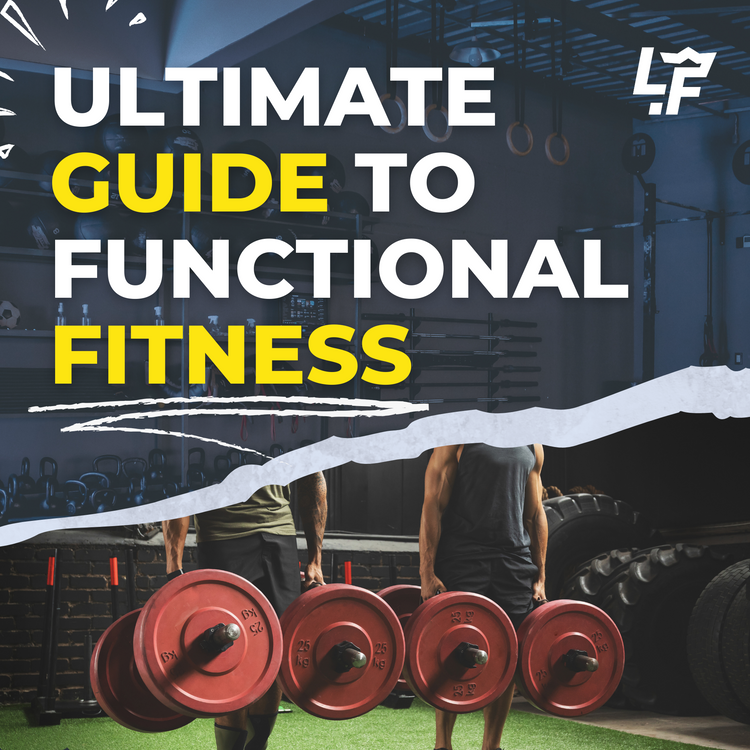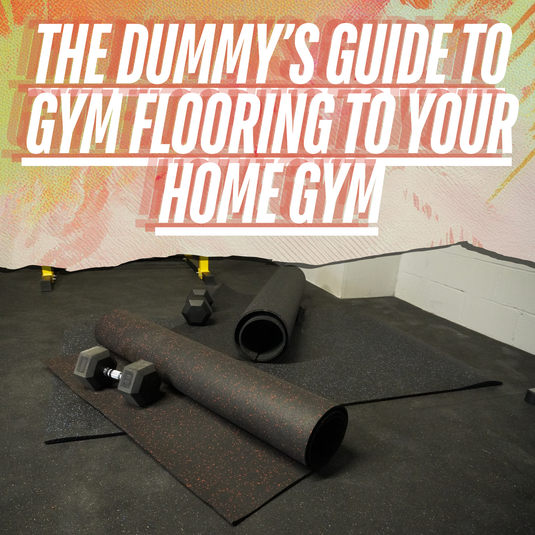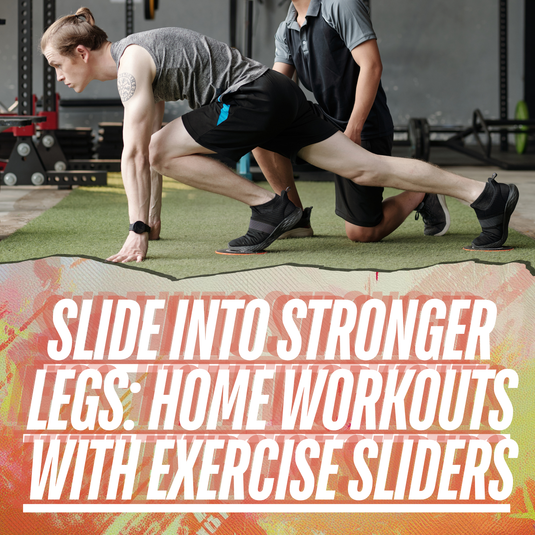Functional Fitness: Strength & Workouts Guide

⏱️ Estimated Read Time: 6 minutes
🧠 TL;DR
- Functional Fitness: Strength & Workouts Guide offers effective, accessible movements for targeted results.
- This guide is designed to help you move smarter, build strength, and stay consistent.
✍️ Summary
This post explores functional fitness: strength & workouts guide in a way that’s actionable and easy to follow. Whether you're new to this style of training or leveling up, it includes practical takeaways for your routine.
📚 Table of Contents
Unlocking Everyday Strength: A Guide to Functional Fitness
As I lace up my sneakers and prepare for my daily workout, I reflect on my journey into functional fitness. It's not just about lifting weights or running on a treadmill; it's about preparing my body for the demands of everyday life. I've come to realize that functional fitness is the key to unlocking everyday strength – the kind of strength that goes beyond the gym and seamlessly integrates into the fabric of our daily routines. Engaging in functional fitness workouts and functional strength training helps in building strength that is practical and applicable to daily tasks.
Define Functional Fitness
Functional fitness is more than a trendy term; it's a philosophy that reshapes how we approach exercise. It's about movements that echo the activities we encounter in our daily lives – from bending and lifting to reaching and twisting. As I delve into the science of functional fitness, I discover that it's not just about isolated muscle training; it's about training movements that engage multiple muscle groups simultaneously. This holistic approach aligns with the natural, multi-joint nature of our bodies, making it an essential component of a functional fitness program and functional training workout.
Importance in Daily Life
Picture this: you're effortlessly lifting grocery bags, chasing after your kids at the park, or maintaining your independence as you age gracefully. These scenarios paint a vivid picture of the importance of functional fitness in our daily lives. The benefits extend beyond the physical; research indicates that regular functional fitness can improve cognitive function and overall well-being. It's not just a workout but an investment in a well-lived life.
Digging deeper into the functional fitness benefits, I uncover various advantages of functional fitness. Improved posture becomes a natural outcome, reducing the strain on our bodies during prolonged periods of sitting or standing. The risk of injuries takes a nosedive as functional movements correct imbalances and fortify our bodies against life's unexpected twists and turns. It's a holistic approach to well-being that transcends the superficiality of aesthetics, providing significant functional fitness benefits.
Understanding Functional Movements
To truly grasp the essence of functional fitness, it's crucial to understand its principles. Think of it as a symphony of movements, a choreography that harmonizes multiple muscle groups. Scientifically, these compound movements activate not just one muscle but an entire chain, promoting a more balanced and coordinated body. Studies show that functional fitness can enhance movement patterns, addressing muscle imbalances often leading to injuries. Functional strength training is key in achieving these balanced movement patterns.
Preventing Imbalances
In the realm of functional fitness, preventing imbalances is a cornerstone. As I delve into the intricate science behind it, I discover that functional movements correct asymmetries, ensuring no muscle group is left behind. Like a well-tuned machine, the body functions optimally when all its parts move in unison. Research suggests that imbalances not only hinder performance but can lead to chronic pain and injuries. Functional fitness becomes the antidote, aligning our bodies and fortifying them against the wear and tear of daily life.
Joint Health and Flexibility
Our joints, the hinges of our body, deserve special attention in the functional fitness narrative. As I explore the connection between functional fitness and joint health, it becomes evident that these movements contribute to enhanced flexibility and range of motion. A study published in the Journal of Aging and Physical Activity indicates that regular functional fitness exercises can significantly improve joint flexibility, particularly in older adults. It's not just about looking strong; it's about maintaining the fluidity and ease of movement that defines a healthy body.
Get Access to Our 40+ Different Programs + Create Your Own With Our Workout Generator! Follow on Desktop or Mobile for 30 Days FREE (No Credit Card Info Required 👀)
Functional Fitness Exercises
Now, let's lace up our shoes and dive into the practical aspect of functional fitness – the exercises that bridge the gap between the gym and daily life. Whether you are a seasoned athlete or looking for functional fitness exercises for beginners, these movements cater to all fitness levels. This approach ensures that everyone can benefit from functional exercise, regardless of their starting point.
Bodyweight Exercises
Functional fitness isn't about complicated gym equipment; it's about leveraging the weight of our bodies. Squats, lunges, and push-ups are the building blocks of functional fitness. Squats, for instance, sculpt your legs and prepare you for the simple act of sitting down and standing up. The beauty lies in the simplicity; these exercises mirror the natural movements our bodies were designed to perform.
Squats
Benefits
- Leg Strength: Squats primarily target the muscles in your legs, including quadriceps, hamstrings, and calves.
- Improved Mobility: Regular squats increase hip and ankle flexibility, enhancing overall mobility.
How To Do It
- Stand with feet shoulder-width apart.
- Lower your body by bending your knees and pushing your hips back like sitting in a chair.
- Keep your chest up and lower until your thighs parallel the ground.
For more in depth on the squat, check out out its blog!
Variations
- Jump Squats: Add an explosive jump as you rise from the squat position.
- Goblet Squats: Hold a weight close to your chest while performing squats.
Lunges
Benefits
- Leg Toning: Lunges target the quadriceps, hamstrings, and glutes for toned leg muscles.
- Balance and Stability: Lunges stabilize muscles, improving balance and stability.
How To Do It
- Stand with feet together and step forward with one leg.
- Lower your body until both knees are bent at a 90-degree angle.
- Push off the front foot to return to the starting position.
For more in depth on the lunge, check out out its blog!
Variations
- Reverse Lunges: Step backward instead of forward.
- Walking Lunges: Perform lunges while walking along.
Push-ups
Benefits
- Upper Body Strength: Targets chest, shoulders, and triceps.
- Core Activation: Engages core muscles for stability.
How To Do It
- Start in a plank position with hands placed slightly wider than shoulder-width apart.
- Lower your body by bending your elbows, keeping your body in a straight line.
- Push back up to the starting position.
For more in depth on the push up, check out out its blog!
Variations
- Diamond Push-ups: Place hands close together in a diamond shape.
- Incline Push-ups: Perform push-ups with hands elevated on a surface.
Pull-ups
Benefits
- Upper Body and Back Strength: Targets the latissimus dorsi and biceps.
- Improved Grip Strength: Enhances grip strength and forearm muscles.
How To Do It
- Hang from a horizontal bar with palms facing away.
- Pull your body up until your chin is above the bar.
- Lower your body back down with control.
Variations
- Chin-ups: Palms facing towards you.
- Assisted Pull-ups: Use a resistance band or assistance to aid the movement.
Burpees
Benefits
- Total Body Workout: Combines strength and cardiovascular exercise.
- Calorie Burn: High-intensity nature contributes to calorie burning.
How To Do It
- Start in a standing position.
- Drop into a squat position, place your hands on the ground, and kick your feet back.
- Perform a push-up, then jump back to the squat position.
- Explosively jump up from the squat position.
Variations
- Burpee with a Push-up: Add a push-up in the plank position.
- Burpee Box Jumps: Jump onto a box or platform after the squat position.
Planks
Benefits
- Core Strengthening: Targets the entire core, including abs and back.
- Improved Posture: Helps maintain a straight and stable spine.
https://www.youtube.com/watch?v=pvIjsG5Svck
How To Do It
- Start in a plank position with elbows directly beneath your shoulders.
- Keep your body in a straight line from head to heels.
- Hold the position for the desired duration.
Variations
- Side Plank: Rotate your body to one side, supporting yourself on one arm.
- Plank with Shoulder Taps: Tap each shoulder with the opposite hand in the plank position.
Jumping Jacks
Benefits
- Cardiovascular Endurance: Raises heart rate for cardiovascular benefits.
- Full Body Activation: Engages multiple muscle groups simultaneously.
https://www.youtube.com/watch?v=iSSAk4XCsRA
How To Do It
- Start with feet together and arms at your sides.
- Jump while spreading your legs and raising your arms overhead.
- Jump back to the starting position.
Variations
- Seal Jacks: Step to the side instead of jumping while raising your arms.
- Cross Jacks: Cross your arms in front of your chest as you jump.
Sit Ups
Benefits
- Abdominal Strength: Targets the rectus abdominis for a strong core.
- Flexibility: Involves a full range of motion for the abdominal muscles.
- Lie on your back with your knees bent and feet flat on the ground.
- Cross your arms over your chest or place your hands behind your head.
- Use your abdominal muscles to lift your upper body toward your knees.
Variations
- Russian Twists: Add a rotation at the top of the sit-up, touching one hand to the opposite side.
- Leg Raises: Lift your legs towards the ceiling instead of sitting up.
Remember to start with a proper warm-up and gradually progress to more challenging variations. Always maintain good form to maximize effectiveness and reduce the risk of injury.
Get Access to Our 40+ Different Programs + Create Your Own With Our Workout Generator! Follow on Desktop or Mobile for 30 Days FREE (No Credit Card Info Required 👀)
Proper Form
While the allure of functional exercises lies in their simplicity, the devil is in the details – proper form. Form isn't just about aesthetics; it's about maximizing effectiveness and preventing injuries. Dr. Emily Splichal, a podiatrist and human movement specialist, emphasizes the importance of form in functional movements. "Proper form ensures that you activate the right muscles, promoting balanced strength and reducing the risk of overuse injuries," she notes. As I perform each exercise with mindfulness, I feel the difference – not just in the burn but in how my body moves and responds.
Creating a Functional Fitness Routine
Armed with the knowledge of functional movements, it's time to craft a personalized routine that aligns with our goals and fitness levels.
Personalized Routine
Crafting a functional fitness routine is a journey of self-discovery. It begins with an honest assessment of our fitness level and clearly defines our goals. Whether we aim for weight loss, muscle gain, or overall health, the beauty of functional fitness lies in its adaptability. Dr. Jane Thornton, a sports medicine physician, emphasizes tailoring workouts to individual needs. "One size doesn't fit all in fitness," she says. With this wisdom, I set realistic goals and tailor my routine accordingly.
Variety and Progression
The essence of functional fitness lies in its variety. It's not about monotony; it's about embracing the richness of movement. I incorporate various exercises covering different movement patterns – pushing, pulling, squatting, hinging, and rotating. This variety keeps the workout exciting and ensures a comprehensive engagement of muscle groups. Research from the American Council on Exercise suggests that varying exercises prevent plateaus and promote continuous improvement. Progression becomes a natural companion to variety – increasing intensity, adding new exercises, and challenging my body to adapt.
Rest and Recovery
In the hustle of our fitness journey, the often-overlooked heroes emerge – rest and recovery.
Elaborate on the significance of rest days, active recovery, and proper sleep. Explain how these elements contribute to overall fitness and injury prevention.
In the pursuit of fitness, rest isn't a sign of weakness; it's a strategic move to allow our bodies to rebuild and grow stronger. Dr. Matthew Walker, a neuroscientist and sleep expert, emphasizes the crucial role of sleep in the recovery process. "Sleep is where the magic happens. It's when your body repairs and strengthens itself," he notes. Active recovery, incorporating low-intensity activities, further enhances the recovery process. As I prioritize rest, recovery, and quality sleep, I witness the transformation in my performance and overall well-being.
Conclusion
As I conclude this journey into functional fitness, I marvel at the seamless integration of strength into my daily life. Functional fitness isn't just a workout; it's a philosophy transforming how we move, think, and live. The benefits – improved posture, reduced risk of injury, enhanced well-being – ripple through every aspect of our lives. It's a journey accessible to all, regardless of age or fitness level.
The practicality of functional fitness is its greatest strength. It's not confined to a gym; it's a lifestyle that embraces movement in its purest form. As I witness its inclusivity, I'm reminded of the words of Dr. Kelly Starrett, a physical therapist and CrossFit coach: "Your body is your gym. The world is your playground."
I encourage you, dear reader, to embrace functional fitness as more than a workout routine. It's a holistic approach to health – a journey beyond the gym walls. As we seamlessly incorporate functional movements into our daily lives, we unlock the door to a life of strength, vitality, and well-being.
Get Access to Our 40+ Different Programs + Create Your Own With Our Workout Generator! Follow on Desktop or Mobile for 30 Days FREE (No Credit Card Info Required 👀)
Helpful Resources:
Want more guidance? Check out our Weekly Dumbbell Workout #1.
📝 FAQs
How often should I do these exercises? +
2–3 times per week is a good starting point for most people.
Do I need equipment? +
Many of these can be done with just your bodyweight or a single kettlebell or dumbbell.
Can beginners do these routines? +
Yes! These movements are designed to scale with your fitness level.




